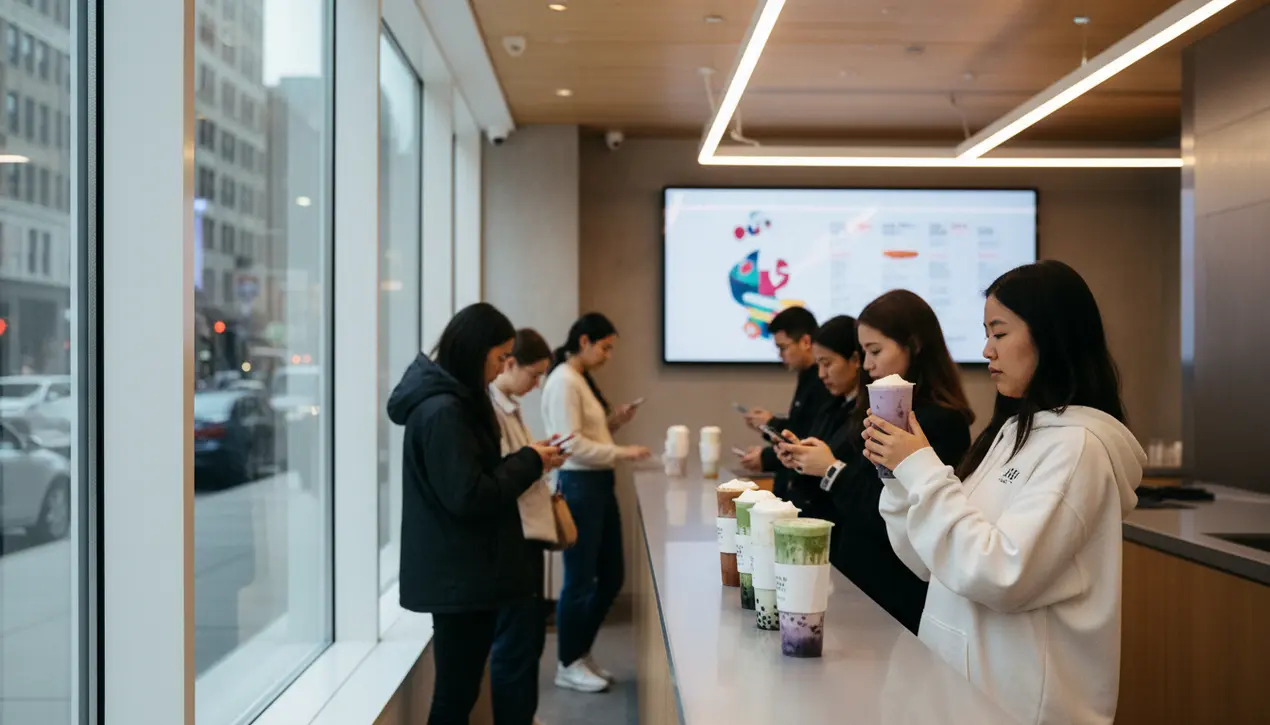
Otherfood & diningRestaurant Openings
Chinese Beverage Chains Spread Across the US, Challenging Starbucks' Dominance
ME
Megan Hill
2 hours ago7 min read
Move over, pumpkin spice, there’s a new aesthetic in town, and it’s brewing a quiet revolution in plain sight. Chinese beverage chains, led by the phoenix-like resurgence of Luckin Coffee and the elegant, tea-centric allure of Chagee, are planting their flags in the American landscape, and they’re doing it not with the clatter of ceramic mugs and free Wi-Fi, but with the silent, sleek efficiency of a smartphone screen.This isn't just a story about caffeine; it's a masterclass in modern consumer capture, a deliciously strategic invasion where the battlefield is your Instagram feed and the weapon of choice is a drink so visually stunning it practically demands a photoshoot before the first sip. Think about the last time you walked into a Starbucks.The experience is familiar, almost ritualistic—the green siren logo, the queue, the personalized cup. Now, picture this: ordering a velvety cheese tea crowned with a salty-sweet cream cap or a crystalline bubble tea with hand-pulled pearls, all through a beautifully designed app that remembers your preference for half-sugar and no ice, offering discounts so aggressive they feel like a personal gift.This is the core of the challenge these Chinese brands pose. They aren’t trying to out-Starbucks Starbucks; they are rendering its model quaint.Their entire ecosystem is built for the digital-native, experience-hungry consumer. Luckin, which famously cratered in a 2020 accounting scandal only to execute one of the most remarkable corporate comebacks in recent memory, has landed on American shores with a playbook refined by fire.Its stores are often smaller, pick-up-oriented hubs, minimizing overhead while maximizing the convenience of grab-and-go fueled by app-based ordering. Chagee brings a different kind of allure, steeped in the heritage of Yunnan tea culture but presented with a minimalist, almost art-gallery aesthetic that makes your matcha latte look like a museum piece.The drinks themselves are the stars of the show. We’re talking about layers of vibrant color, ingredients like osmanthus flowers and lychee jelly, and toppings that range from fluffy cheese foam to intricate latte art.They are engineered for 'social currency'—a term marketers use for products that gain value by being shared. Every posted story of a pastel-colored drink in a chic, branded cup is free, targeted advertising, creating a viral loop that traditional marketing budgets can’t buy.This is a profound shift from Starbucks' third-place philosophy, which was about creating a community space. The new model is about integrating seamlessly into the digital community you already inhabit.The implications are massive. For decades, American consumer culture has been a one-way export, with brands like McDonald's and yes, Starbucks, colonizing global high streets.The arrival and potential success of these Chinese chains signal a reversal, a moment where a distinctly Chinese model of retail—hyper-digital, experience-focused, and value-driven—is being imported and tested on the world's most competitive consumer market. It raises fascinating questions about the future of retail real estate, the power of data collected through proprietary apps, and whether American consumers, long accustomed to a certain coffee shop ritual, are ready to embrace a new, more transactional yet visually rewarding relationship with their daily brew. Will Starbucks, the undisputed Goliath, be able to pivot quickly enough to address this digital-first, aesthetic-heavy David? Or will we look up in five years to find our caffeine landscape permanently altered, our loyalties divided not by the quality of a simple espresso, but by the allure of an entire digital ecosystem served in a cup? Only time, and our collective Instagram feeds, will tell.
#featured
#Luckin Coffee
#Chagee
#Chinese beverage chains
#US expansion
#mobile apps
#Starbucks competition
#food and dining
Stay Informed. Act Smarter.
Get weekly highlights, major headlines, and expert insights — then put your knowledge to work in our live prediction markets.
Comments
Loading comments...
© 2025 Outpoll Service LTD. All rights reserved.